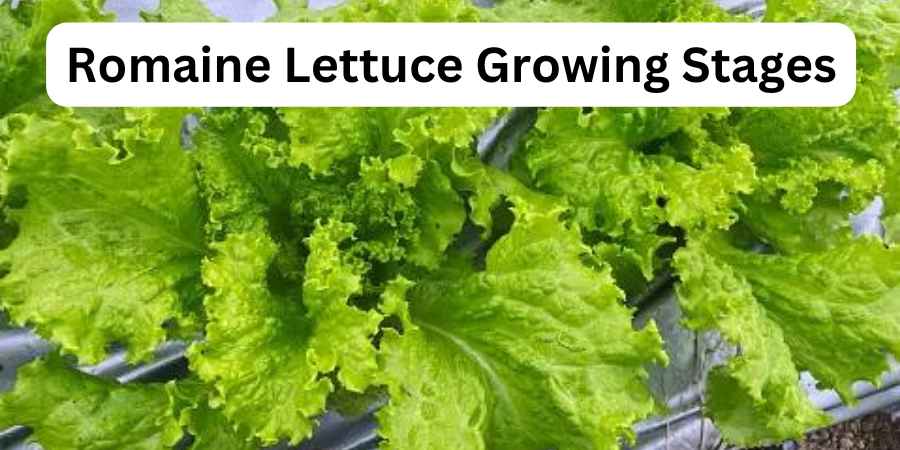Last Updated on June 27, 2025 by Jocelyn
Romaine lettuce (Lactuca sativa longifolia) grows best in cool weather and well-drained, moist soil. It starts with planting seeds in early spring, lightly covered with soil and kept evenly moist.
This plant is known for its tall shape and crisp, dark green leaves, often used in salads. Romaine can be grown in garden beds or containers, as long as it receives full sunlight and regular watering.
The plant grows through six stages. It begins with germination, where the seed sprouts and forms tiny leaves called cotyledons. In the seedling stage, small leaves develop and spacing becomes important.
Then in the vegetative stage, the plant produces more leaves and starts to form a compact, upright shape. This is followed by the heading stage, when the outer leaves wrap around a firm center.
Finally, during the harvesting stage, the mature head is ready to be cut and used.
Each stage follows in order, and proper care helps the plant grow from a seed into a full head of lettuce ready to harvest.
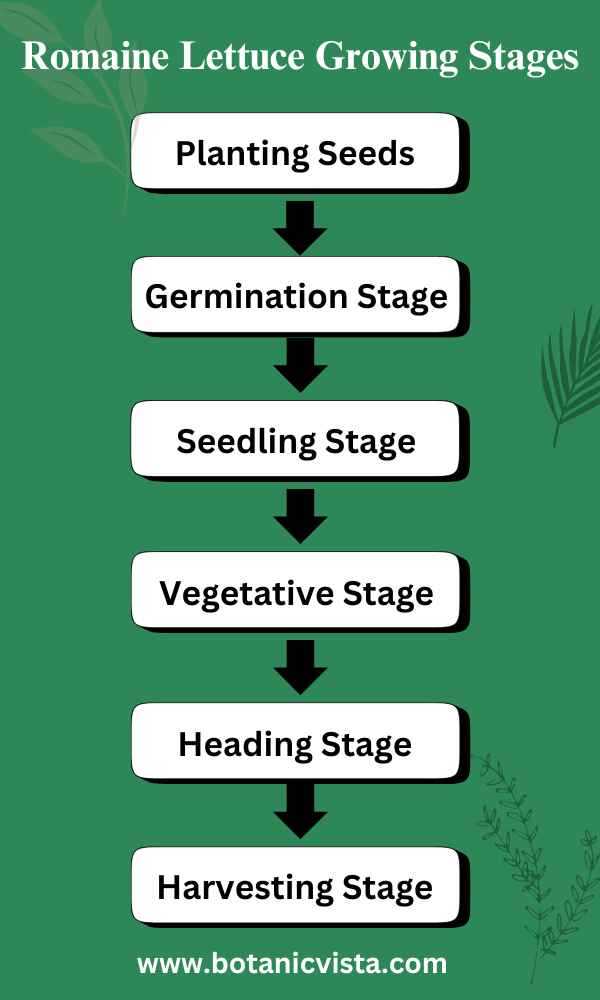
Table of Contents
ToggleRomaine Lettuce Growing Stages – Step-by-Step Guide
Romaine lettuce is a nutritious leafy green, perfect for salads and wraps. Learning about its growth stages can help ensure a healthy and abundant harvest.
Let’s discuss these stages in detail.
1. Planting Lettuce Seeds
Planting lettuce seeds is an important stage in growing romaine lettuce. First, choose a good spot in your garden with cooler weather, especially during early spring.
Start by scattering the seeds evenly over the soil. Use your fingers to press the seeds gently into the ground. This ensures that the seeds are sown properly.
If you’re planting indoors, use small pots and follow the same method. Press the seeds lightly with your fingers and cover them with a thin layer of soil.
After approximately two weeks, you’ll see tiny plants beginning to grow. After the last frost has passed, you can move the indoor plants outside.
When planting directly in the garden, make sure the frost is gone. Select varieties that suit your garden’s size. Press and scatter the seeds evenly for the best results. This careful planting ensures healthy lettuce plants.
2. Germination Stage
The Germination Stage is very important for growing romaine lettuce. It starts with the seeds sprouting and ends when small leaves, called cotyledons, appear.
For successful germination, the seeds need the proper amount of moisture, light, and the right temperature.
The soil should be cool to help the seeds absorb needed oxygen. The best temperature for germination is generally between 60°F and 70°F.
Keeping the soil adequate with moisture is crucial. Using a heat mat can help maintain the proper temperature if it’s too cold.
The process begins by placing the seeds in the dirt and keeping the soil moist but not waterlogged. After a few days, you will notice the emergence of small cotyledon leaves. This stage lasts about two weeks.
Maintain the proper humidity levels to avoid suffering plants. Consistent moisture ensures a successful germination process. Germination is crucial because it sets the foundation for healthy lettuce plants.

3. Seedling Stage
When you grow romaine lettuce, the seedling stage is crucial. At this stage, tiny seedlings start to develop. The first leaves, called cotyledons, appear. These need adequate light for healthy growth. LED lights can help.
As seedlings grow, overcrowded plants need thinning. Gently remove some to ensure proper spacing about six inches apart. This helps each plant expand and grow true leaves.
Keep the soil moist but not too wet. Apply water carefully. Maintain an optimal temperature. Following these steps ensures healthy seedlings and a good outcome for your romaine lettuce.
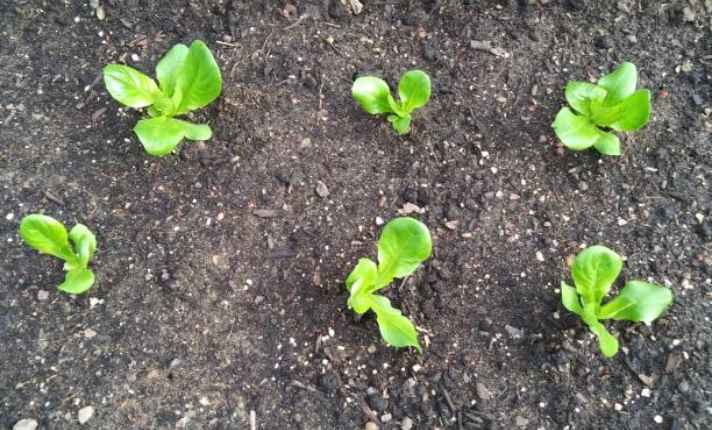
4. Vegetative Stage
In the vegetative stage, the plant focuses on growing leaves and becoming dense. Seeds are planted and soon, small leaves begin to form a compact rosette. Over a few weeks, the leaves grow outward and become circular and ruffled.
During this period, it is important to maintain proper temperatures to avoid environmental stresses that can affect the plants.
Typically, after a short period, the lettuce will achieve a tall and upright formation with a dense center. Keeping an eye on the high temperatures and stress factors is crucial.
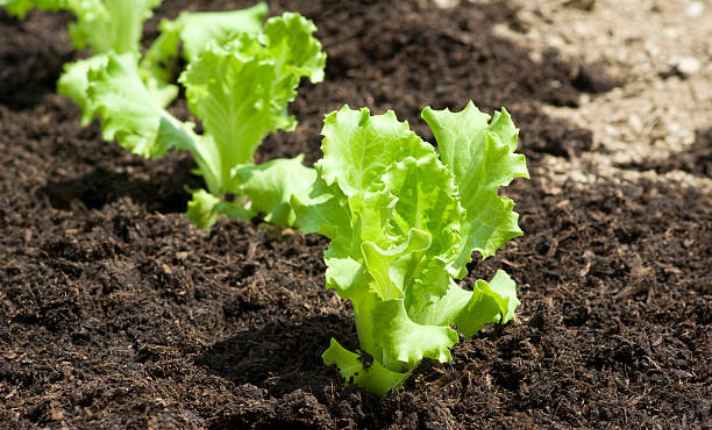
5. Heading Stage
When romaine lettuce starts growing, the small leaves form first. They create a dense bunch as they grow. The outer leaves protect the tender center. This stage is important because it shows the formation of the lettuce head.
During this time, the plant needs good care. It can take about 30 to 45 days for the head to grow big enough. The leaves might start curling at the edges, which means they are growing well.
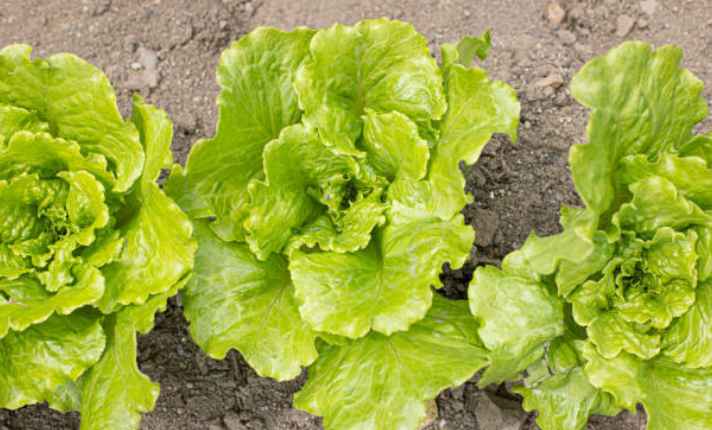
6. Harvesting Stage
When it’s time to harvest your romaine lettuce, it’s best to do it in the morning. This is when the leaves are freshest and crisp. Look for signs that your lettuce is ready, such as leaves that are about 6 to 8 inches tall.
It’s recommended to use a sharp knife or scissors to cut the lettuce at the base. Make sure you avoid damaging the plant.
Different varieties of romaine lettuce may have slightly different harvest times, so check your seed packet for details.
For fresh taste, harvest early in the day, above the ground level. After harvesting, handle the lettuce gently and store it in the refrigerator to keep it crisp and fresh.
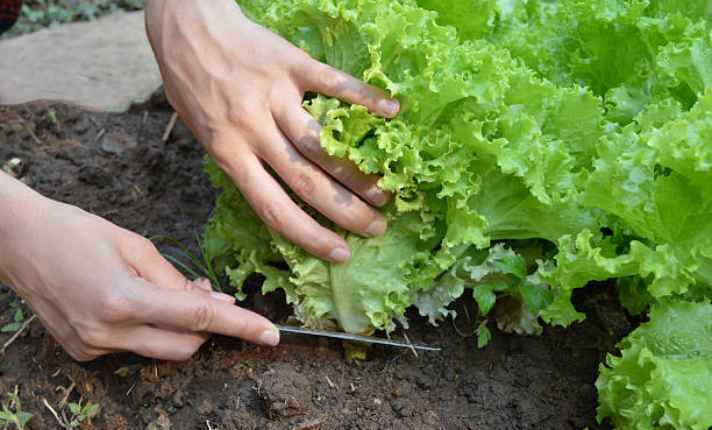
Common Issues and Solutions
Growing romaine lettuce can be fun but also tricky. Sometimes, problems pop up. Let’s talk about some common issues and how to fix them.
One problem you might face is pests and diseases. Bugs like aphids and diseases like mildew can harm your lettuce. You need to keep an eye out for these.
| Problem | Symptoms | Solution |
| Aphids | Tiny bugs on leaves | Spray with soapy water |
| Powdery mildew | White powdery spots on leaves | Use fungicides or remove infected leaves |
| Slugs | Holes in leaves | Set up beer traps |
Essential Tips for Growing Romaine Lettuce
To start, make sure your soil has a pH between 6.0 and 7.0. Well-draining soil is essential, and you can use DIY potting soil recipes for the best results.
Preparing the Soil
Prepare the soil by enriching it with finished compost or bagged compost. Ensure the soil remains loose and moist. Adding organic liquid fertilizer or balanced fertilizer can boost growth.
Ideal Growing Conditions
Romaine lettuce thrives in cooler temperatures of 60-65°F. Protect your plants during the hottest days with a floating row cover. This helps maintain the optimal temperature and shields against pests like aphids and slugs.
Use garden shade cloth if the weather gets too hot, as this can prevent the leaves from turning bitter.
Pest Management
Implement companion planting by growing sweet alyssum to attract beneficial insects such as parasitic wasps and ladybugs, which help control pests naturally.
Use organic iron phosphate-based slug bait to manage slugs effectively. Employing newspaper or paper mulch can help keep the soil moist and weed-free.
Harvesting Romaine Lettuce
Harvesting can start in about 30 days for baby greens and continue until you get full heads. Use a sharp knife to cut the leaves at the base. By leaving the growing point intact, you can enjoy multiple harvests.
Watering and Fertilizing
Maintain consistent soil moisture, avoiding fresh manures directly on plants. Use NPK fertilizer or fish hydroslate for better growth. Water carefully to ensure the plants get enough moisture without becoming waterlogged.
By following these essential tips, you’ll be able to grow healthy and delicious lettuce successfully!
FAQ’s
Q: How Do You Pick Romaine Lettuce to Keep It Growing?
A: Pick the outer leaves regularly to allow the plants to continue growing. Taking the older leaves while new ones grow in the center keeps the lettuce head fresh. This works well and ensures a steady supply of lettuce.
Q: How Many Times Can You Harvest Romaine Lettuce?
A: You can harvest romaine lettuce 2-3 times. After each harvest, leave the base of the plant in the soil. This allows the plant to regrow new leaves.
Q: What Is the Best Container to Grow Romaine Lettuce In?
A: Choose a deep container for growing romaine lettuce. Use natural materials like cedar or clay. A container that is one foot wide and deep is ideal.
Q: How to Grow Big Romaine Lettuce?
A: Choose a spot that receives at least 6 hours of sun. Romaine can tolerate some shade, but sun is preferable. Prepare well-drained soil and amend it with compost. Plant seeds, water regularly, and keep the area weed-free for successful lettuce growing.
Q: What Kind of Fertilizer for Romaine Lettuce?
A: Using a balanced fertilizer like 10-10-10 or 5-5-5 during the initial planting weeks helps your lettuce grow strong. After two weeks, add more fertilizer to boost growth and set up for success.
Conclusion
Growing romaine lettuce at home is simple and enjoyable. Start by planting seeds in soil about 1/4 inch deep, keeping it moist but not too wet. As the seedlings grow, give them space and ensure they get enough sunlight and water.
In 60-70 days, you’ll have crisp, green lettuce ready to harvest. Watch out for pests and overwatering by ensuring good soil drainage. By following these key points, you can enjoy fresh, home-grown romaine lettuce.
Read more about plant growth stages and lifecycles in-depth:
